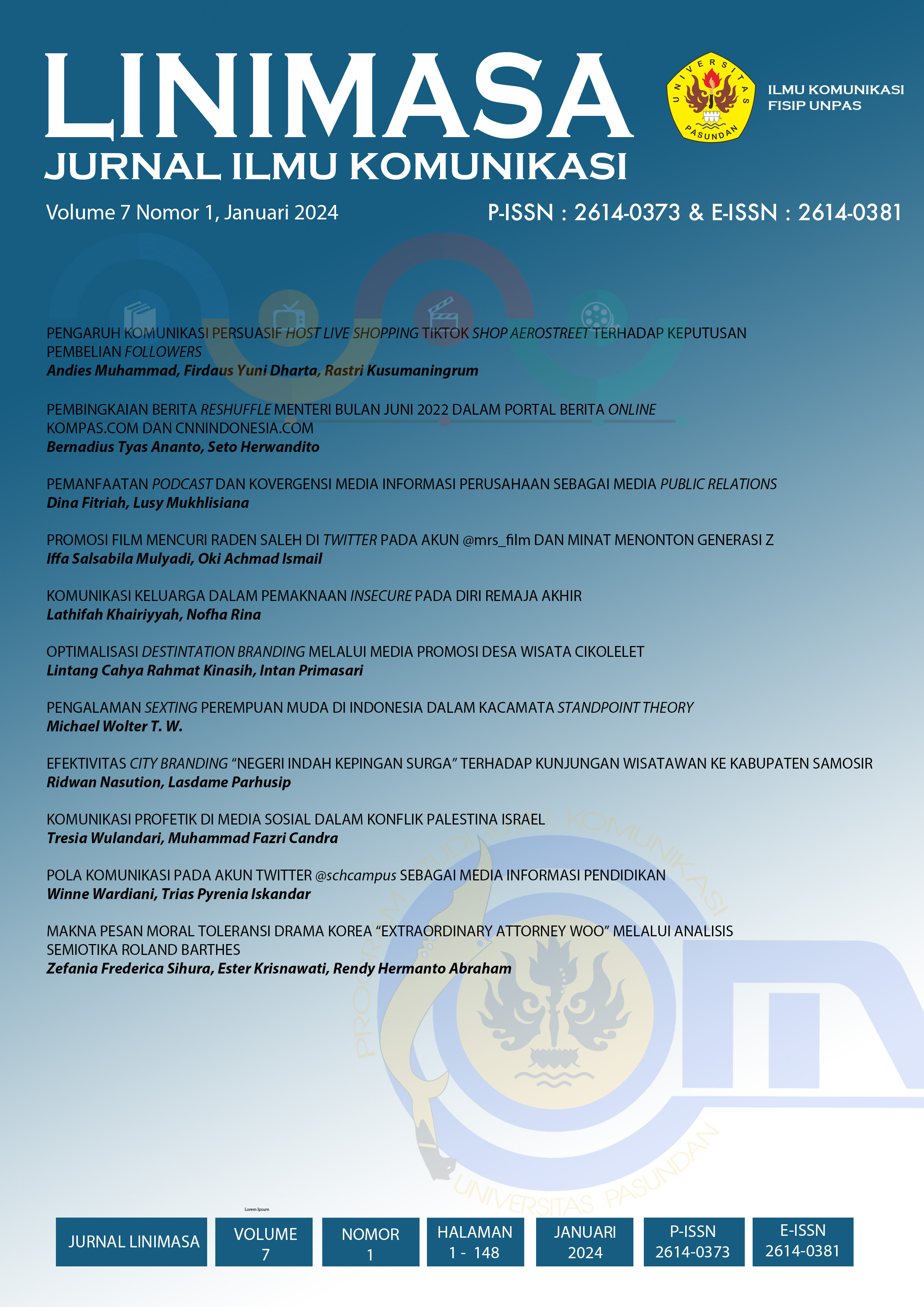EFEKTIVITAS CITY BRANDING “NEGERI INDAH KEPINGAN SURGA” TERHADAP KUNJUNGAN WISATAWAN KE KABUPATEN SAMOSIR
DOI:
https://doi.org/10.23969/linimasa.v7i1.10488Keywords:
City Branding, Samosir, Tourist, Tourism CommunicationAbstract
ABSTRACT
The concept of city branding is a strategy studied to introduce a region to the public. The important thing in this branding is to change the mindset and view of a city. The Regional Government of Samosir Regency established a branding that is considered capable of introducing the potential of the region with the tagline " Negeri Indah Kepingan Surga” (Wonderfull Land Piece of Paradise). The city branding developed is prepared for local, domestic and international markets. The purpose of this research is to determine the effectiveness of city branding " Negeri Indah Kepingan Surga " on visitor interest to Samosir Regency. The research approach used is descriptive qualitative. With a descriptive qualitative method with data collection techniques through observation, literature research and interviews or interviews with informants of visitors at three tourist attractions (Holbung Hill, Sibea-Bea Hill and Pusuk Buhit) and the Head of the Promotion Section of the Samosir Regency Tourism and Culture Office. The results of the research on the effectiveness of city branding "Negeri Indah Kepingan Surga" on tourist visits to Samosir Regency have not been maximized on target and still need to be improved, especially in the provision of facilities and infrastructure and changing the target market. The obstacles that occur in the implementation of the effectiveness of city branding include the lack of community participation in improving tourism in Samosir.
Keywords: City Branding; Samosir; Tourist; Tourism Communication
Downloads
References
Ardianto,Elvinaro. 2010. Metodologi Penelitian untuk Public Relation. Bandung:Simbiosa Rekatama Media.
Assauri,Sofjan. 2014. Manajemen Pemasaran. Jakarta: Raja Grafindo Persada. Baker,K.R. 2012. Principles of Sequencing And Scheduling. New Jersey: John Wiley &Sons.
Bittner.1980. Mass Communication An Introduction. Prentice-Hall
Deddy, M. 2015. Ilmu Komunikasi Suatu Pengantar. Bandung: Remaja Rosdakarya.
Effendy, Onong Uchjana.3003. Ilmu, Teori dan Filsafat Komunikasi. Bandung: Citra Aditya Bakti.
Firmansyah,Anang. 2020. Komunikasi Pemasaran. Jawa Timur: CV.Penerbit Qiara Media.
Gerbner, G. 1967. Mass Media and Human Communication Theory. New York: Holt, Rinehart & Winston..
Jefkins, F.2003. Public Relations. Jakarta: Erlangga.
Kennedy,John. E;R Dermawan Soemanagara. 2006. Marketing Communication: Taktik dan Strategi. Jakarta: Bhuana Ilmu Populer.
Kotler, P. 2000. Prinsip-Prinsip Pemasaran Manajemen. Jakarta: Prenhalindo. Kotler,P dan Gary Amstrong. 2003. Dasar- Dasar Pemasaran. Jakarta: Indeks. Kotler, P. 2005. Manajemen Pemasaran. Jakarta: Prenhalindo
Roubo.Anna. 2010. City branding and its Impact on City’s Attractiveness for External Audiences. Rotterdam: Erasmus University Rotterdam.
Soemirat, S. 2003. Dasar-dasar Public Relations. Jakarta: Citra Aditya. Sobur.Alex. 2009. Semiotika Komunikasi. Bandung: PT. Remaja Rosdakarya. Sugiyono. 2018. Metode Penelitian Kuantitatif, Kualitatif dan R&D. Bandung:Alfabeta.
Tanzeh, Ahmad dan Suyitno.2006. Dasar- Dasar Penelitian. Surabaya: Elkaf.
Teemu dan Seppo. 2009. How to Brand Nations, Cities and Destinations, A Planning Book for Place Branding. USA: Palgrave Macmillan.















